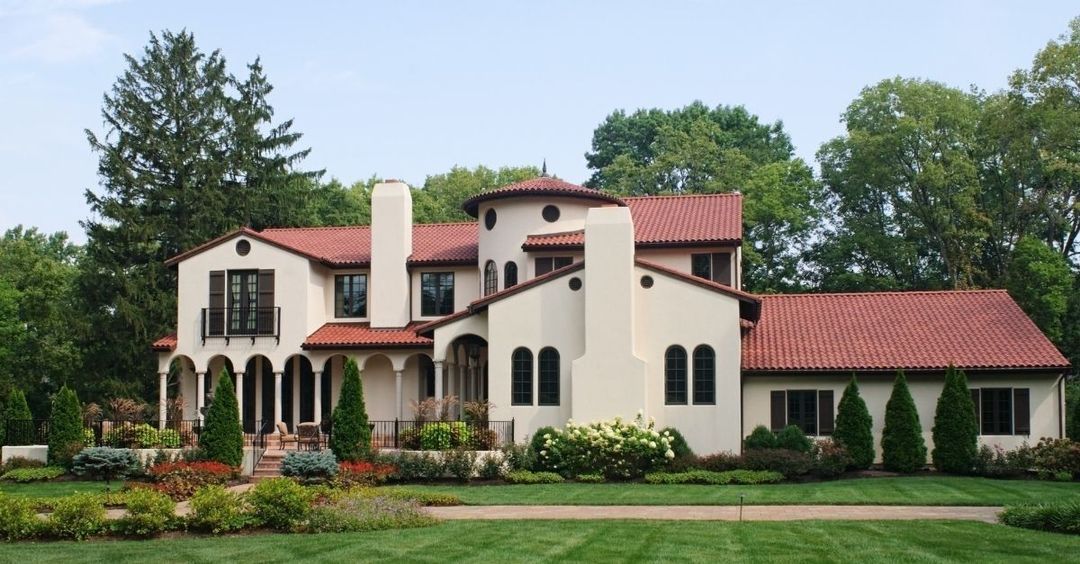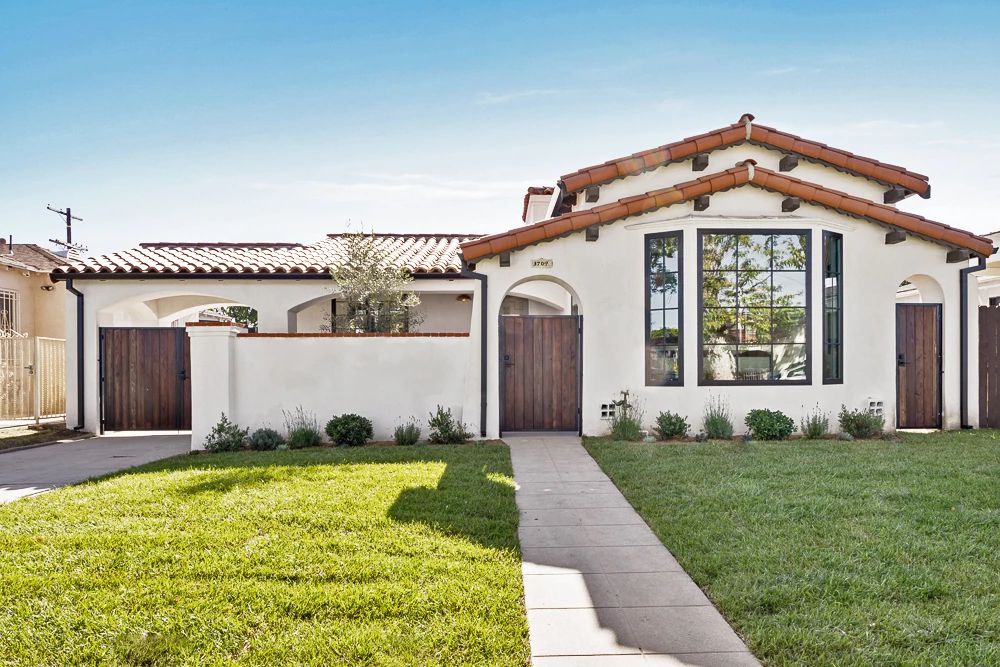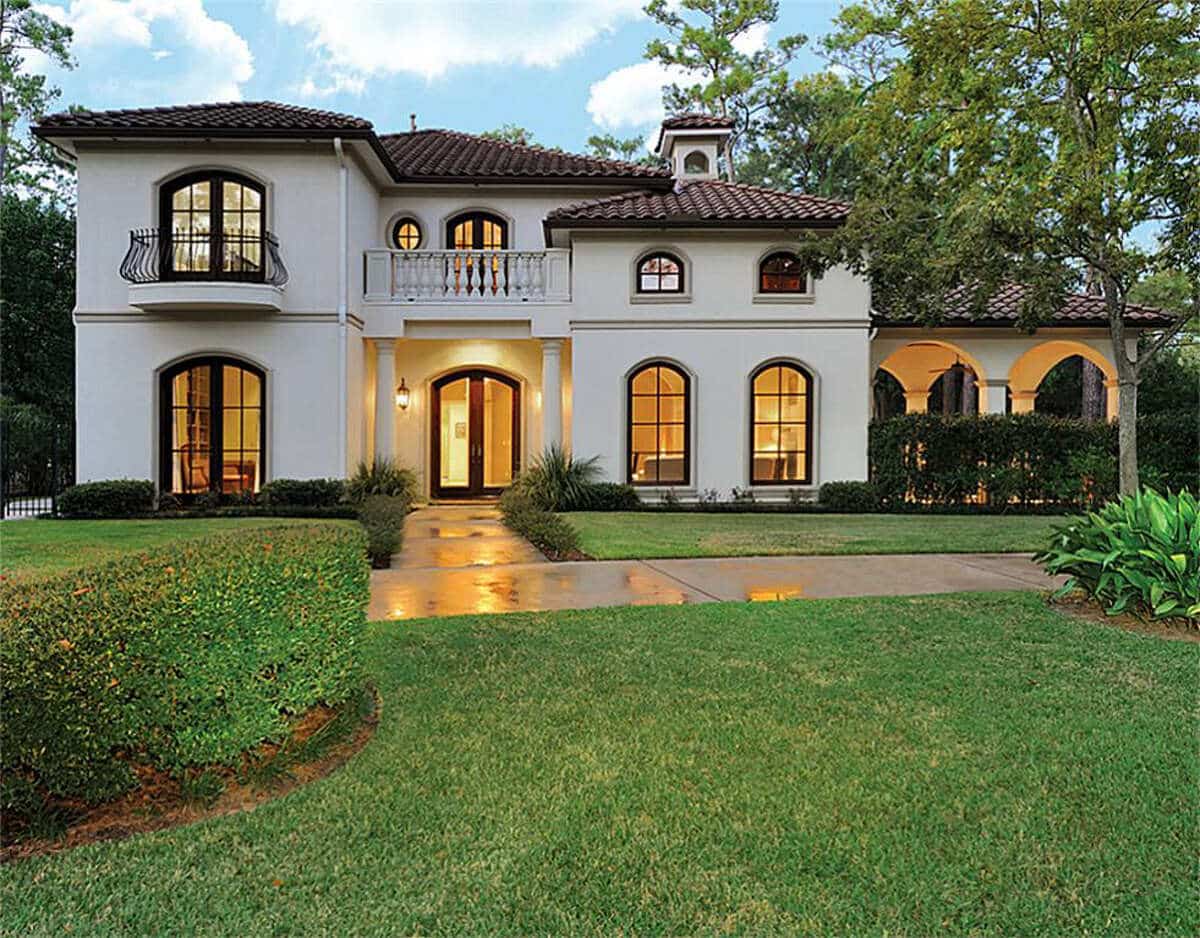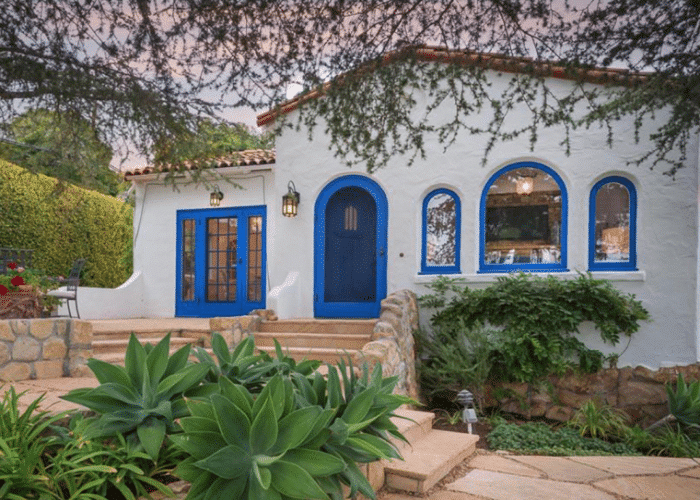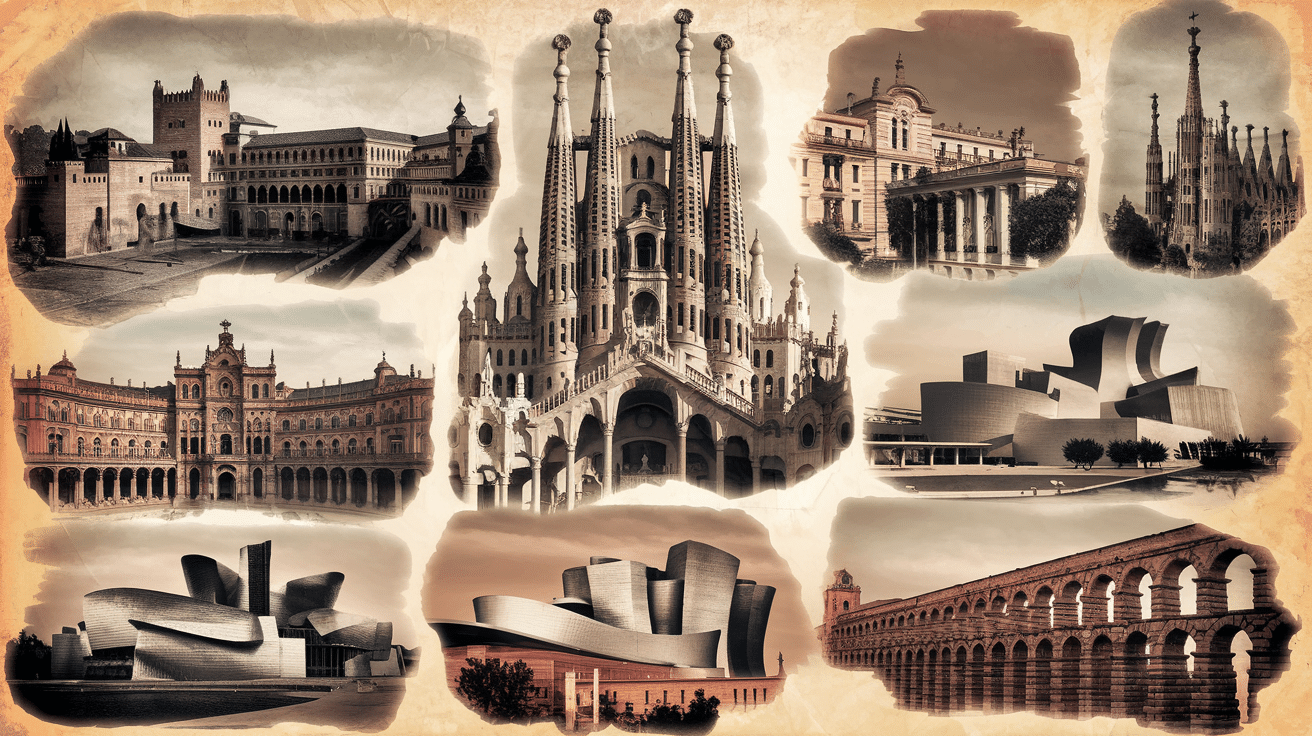Where Are Spanish Style Homes Most Commonly Found
One of the first Europeans to enter the US was the Spaniards. The Spanish colonization of America started in the late fifteenth century, leaving behind a trail of architectural influence. One of the most evident elements is the Spanish-style homes dotting the regions once ruled by the Spaniards.
These Spanish colonial-style buildings are commonly seen in coastal California, sunny Florida, arid Arizona, and New Mexico. An impressive number of Spanish-style homes can be seen in places like New Jersey, Missouri, and Nevada, too.
As per home listings, about one percent of houses listed in California, New Mexico, Florida, and Arizona come with Spanish-style architecture. It is a mere 0.11% of houses across the country, indicating the style’s popularity in the areas colonized by Spain.
What Are Spanish-Style Homes?
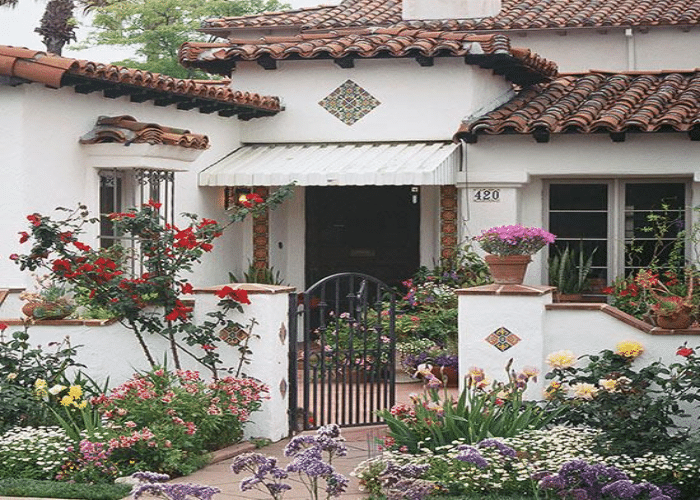
The architectural beauty of these colonial homes has a few signature styles, making them easy to identify from a distance. Energy-efficient Spanish-style homes are a favorite in warmer coastal and dry areas. Mediterranean homes inspire the homes, and many of these colonial-era houses are also a part of the revival movement. Homes from the Revival Movement feature a mix of the colonial style and modern elements.
Identifying a Typical Spanish-Style Home
Let’s delve deep into the typical features of Spanish-style homes that set them apart from other architectural styles.
1. Tiled Roof
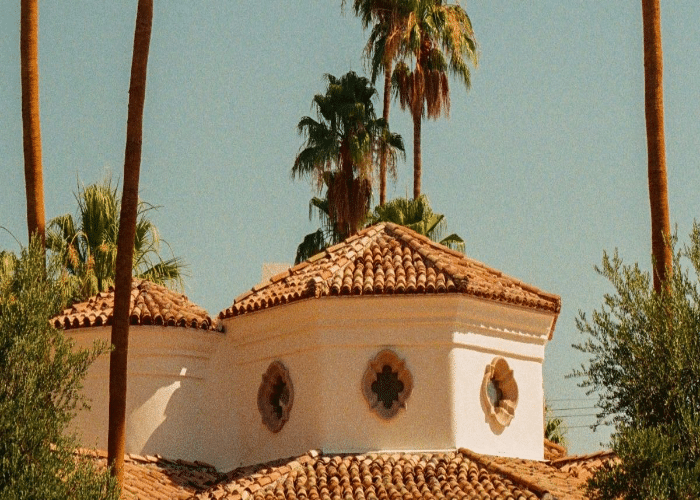
One of the primary striking features of a Spanish-style home is the tiled roof. When Spaniards came to America, they sourced local materials to make their homes. The red barrel terracotta tiles made indigenously were used for the roofs. The roofs are usually low-pitched. In some regions, you will find flat roofs, while in other places, there could be a slight pitch.
The advantage of these red tiles is that they help keep the indoors cooler during the warm season and, hence, are suitable for places with warmer climates.
2. Distinct Arches
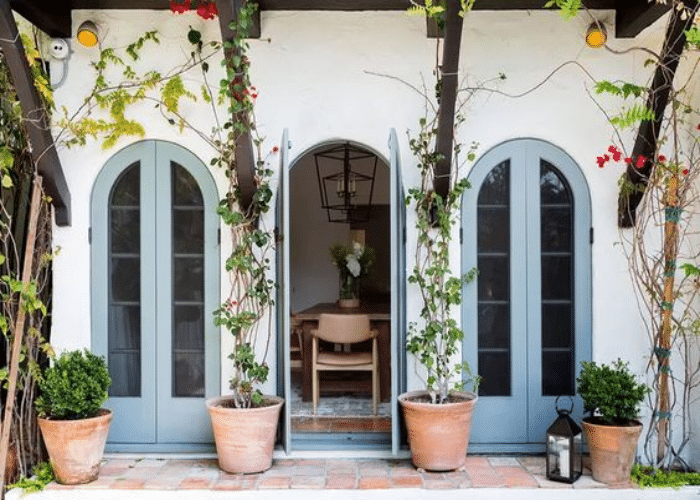
Soft and delicate arches are a common feature of all Spanish-styled homes. These arches are everywhere – windows, doors, corridors, entrances, and more. The curves interestingly play on the mind. They create the feel of an airy, tranquil space.
3. Small-Sized Windows & Large Carved Doors

What is unique about Spanish homes is the presence of small windows and large doors. Both are typically curved. The doors are huge, heavy, and made of wrought iron or wood. Wooden doors are carved.
The large size of the doors helps keep the temperatures inside pleasant and comfortable. The windows, on the other hand, are small and very few in number compared to most modern homes.
Traditionally, windows in Spanish homes would have only iron bars and grills and not glass panes. Wooden shutters are more common. But today, most modernized Spanish-styled homes have windows with glass panes.
4. White Stucco Walls

Spanish colonial homes usually have walls made of either concrete or stucco, the latter being quite popular. The walls are painted white. The reason for the gleaming white wall interiors is that the color keeps the indoors cool. The walls are thick, too. This detail helps retain cool air during the day and circulate warm air during the night.
The exterior facade is also made from stucco and painted white. Wrought iron details on the outside look extremely elegant with white stucco walls. Stucco is a weather-resistant material and is cheap. The white color prevents the heat from getting trapped inside the home.
5. High Ceilings & Wooden Support Beams
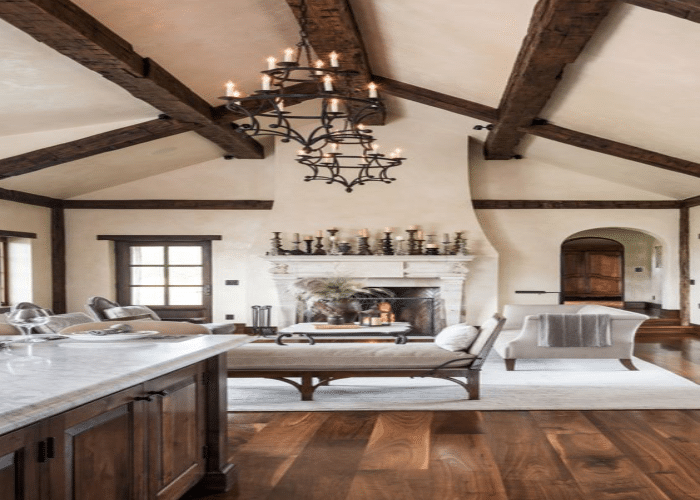
Typically, these colonial homes have high ceilings. Wooden beams support these. The indoor architectural essence portrays a rustic place. To match the high ceilings and the raw wood beams, the indoor is spruced up with terracotta pots, a titled hearth, and comfortable couches and sofas.
6. Minimal Aesthetics
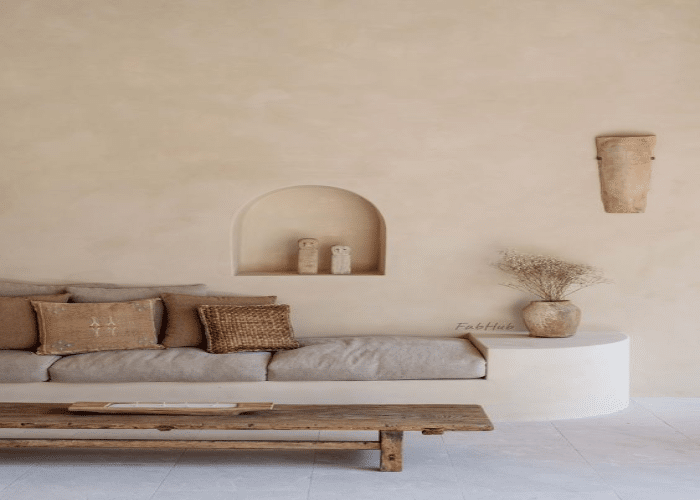
Spanish-style homes are characterized by minimalistic decor. Usually, the houses are either one or two stories. There is more use of ornate embellishments and colorful tile accents. Stonework or tiles are pretty common in the outdoors.
7. Courtyard

Courtyards on the side or in between, shaped as an L inside the home or outdoors, are integral to Spanish-style homes. While ancient Spanish homes had a courtyard in the middle of the house, during present times, these corridors are usually at the rear or to the side. It makes for an outdoor space to relax, unwind, and entertain guests.
8. Wrought Iron Details
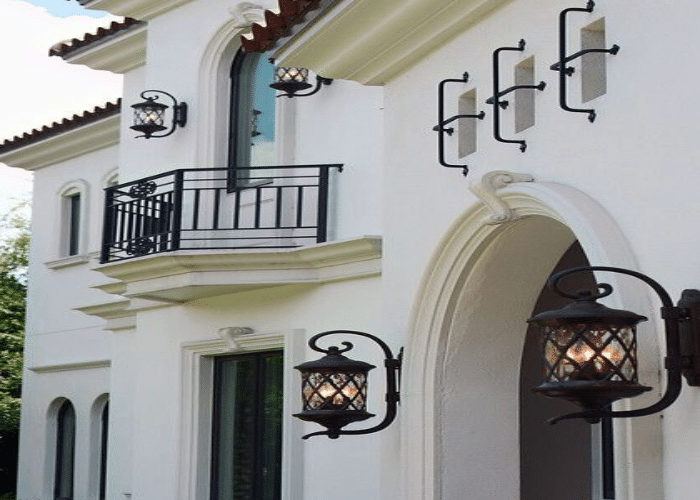
Most Spanish-styled homes have intricate wrought iron details. It is a common sight at such homes – railings, stair banisters, balconies, light fixtures, and more such details.
Types of Spanish-Style Homes
Different types of Spanish colonial architecture that can be seen in and around the country are:
1. Floridian Style
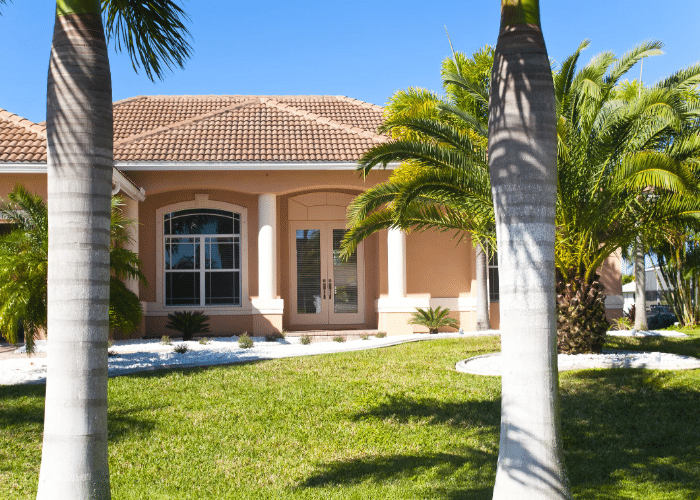
Spanish-styled houses in Florida are different from those in other parts of the US. The Floridian homes have a distinct Baroque influence. Some of the visible features of such homes are ornate exteriors and ornamented columns with windows having a geometric shape.
2. Spanish Electic
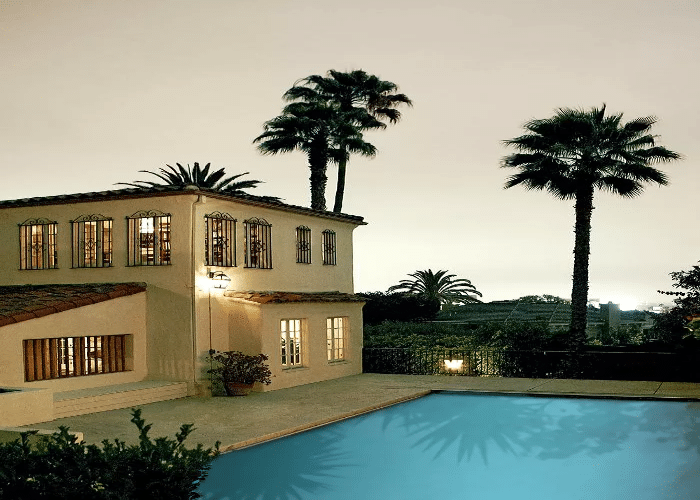
These are the Revival architectural homes that feature terracotta roofs and white stucco walls. But integrating modern elements, these homes also have features like bay windows and other elements from Moorish influence.
3. Mission Revival
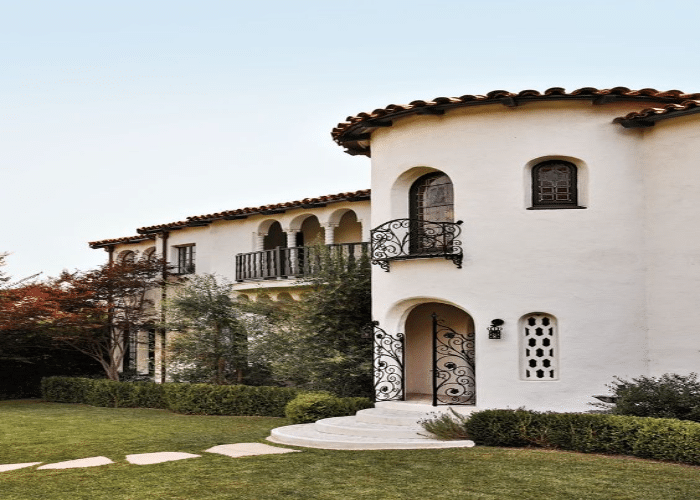
These kinds of Spanish colonial homes are seen more in California. Tiled roofs, stucco walls, and arched doorways are typical characteristics. The roofs are usually low, and some homes may even have bell towers.
Conclusion
The classical look of Mediterranean Spanish homes on the West Coast of the US, with elegant arches, outdoor fireplaces, titled courtyards, and terracotta roofs, speaks volumes about the colonial architecture of Spaniards.
Brimming with rustic vibes, Spanish-style homes are a common sight from California to Riviera, Florida, New Mexico, and Arizona. The Spanish style heavily influences homes in the Southeast and the Southwest regions as elementally, such homes are ideal for hot and dry weather conditions.
If you are a homeowner of an elegant home inspired by Spanish architecture, remember to share the features and the pictures here for our readers, inspiring them to revamp their homes with some Spanish architectural elements.

